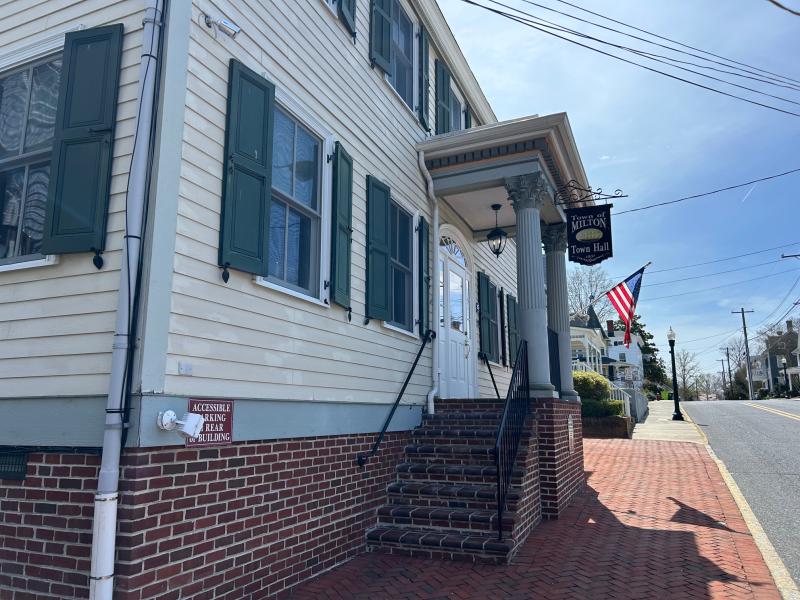The Milton Planning and Zoning Commission plans to debate ordinance language regarding accessory dwelling units, while continuing to hold separate discussions on methods to create more affordable housing.
The commission hashed out ideas during a March 28 workshop meant as a brainstorming session to plan a path forward.
The issue of affordable housing has been in discussion since January 2024, when town council formed an ad hoc committee to create a report that was intended as a roadmap for the town moving forward. Addressing affordable housing is part of the town’s comprehensive development plan, and council members have expressed the desire to create more housing for working families as the average cost of a newly constructed home in Milton has soared to between $395,000 and $600,000. The 11-page report was received by council in February and assigned to planning and zoning to provide an advisory report and possible ordinance language.
The eight recommendations are:
- Working with nonprofit housing developers to build new units on available individual lots
- Requiring developers who seek to annex or rezone property to provide a certain percentage of affordable units
- Preparing an ordinance to allow for accessory dwelling units in residential areas
- Requiring affordable housing in developments with large-parcel development district overlays
- Working with nonprofit developers to facilitate new affordable units in newly annexed communities
- Providing information at town hall on Sussex County block grants
- Encouraging more mixed-use zoning in the town’s future land-use map
- Reviewing the zoning code to find ways to reduce restrictions that increase development costs, such as setbacks, parking regulations and minimum lot size.
“The need for affordable/workforce housing in Milton is real and it is growing,” the report says. “Proximity to the beach and low real estate taxes have attracted higher-income households, retirees and a growing seasonal use of our available housing stock.”
“There are no incentives for developers to build affordable/workforce housing. Essential workers like teachers, police officers and municipal employees, who do not qualify for subsidized housing programs, cannot afford to live here,” the report said.
To change that, the report states the town needs to find a way to work with developers and nonprofits to provide affordable/workforce housing. Among the ways the report suggests to do that is to allow for accessory dwelling units, essentially secondary housing that is located on the lot of a larger, primary home. Accessory dwelling units do not include duplexes or tourist homes, and, the report says, can help homeowners offset costs, allow for multigenerational living arrangements in a more private and independent setting, and offer long-term residency.
The report says the town could offer incentives to attract developers to construct workforce housing on six large, nonsubdivided lots through waiving fees, increasing housing density and relaxing code restrictions. Within town, the report says, there are 55 empty, buildable lots that could offer space for new, affordable units.
In its workshop discussion, planners felt annexations were a good place to start, as the area expands and people are priced out of the areas near the beaches.
“I think we’re next,” Commissioner Jeff Seemans said.
Chair Richard Trask added, “Milton is in the crosshairs right now as far as growth is concerned.”
Commissioner Lynn Ekelund suggested as a condition of annexation that 10% of any residential development must be dedicated to affordable housing units. Trask agreed with the idea, but he added that the town must come up with a definition of what affordable housing is before it could move forward with such a plan.
Commissioners also agreed it would need some regulations for non-annexed, large-parcel developments. Unlike annexations, the developer holds more of the cards in these types of developments, and while commissioners agreed that there should be some sort of incentive for large-parcel developers to put in affordable housing, what that is was not determined. As Commissioner George Cardwell put it, “All we have are carrots and sticks. We don’t have money.”
The commission is planning to take the affordable housing recommendations from the ad hoc committee one by one, and it was agreed that tackling accessory dwelling units is low-hanging fruit that could be picked quickly, as it would come through the zoning code. Project Coordinator Tom Quass told the commission he would draw up ordinance language for the planners’ Tuesday, April 22 meeting that could be discussed.
It was also decided that the best place to try to address affordable housing in annexations was through the town’s charter, which would require an ordinance and final approval by the General Assembly.



















































